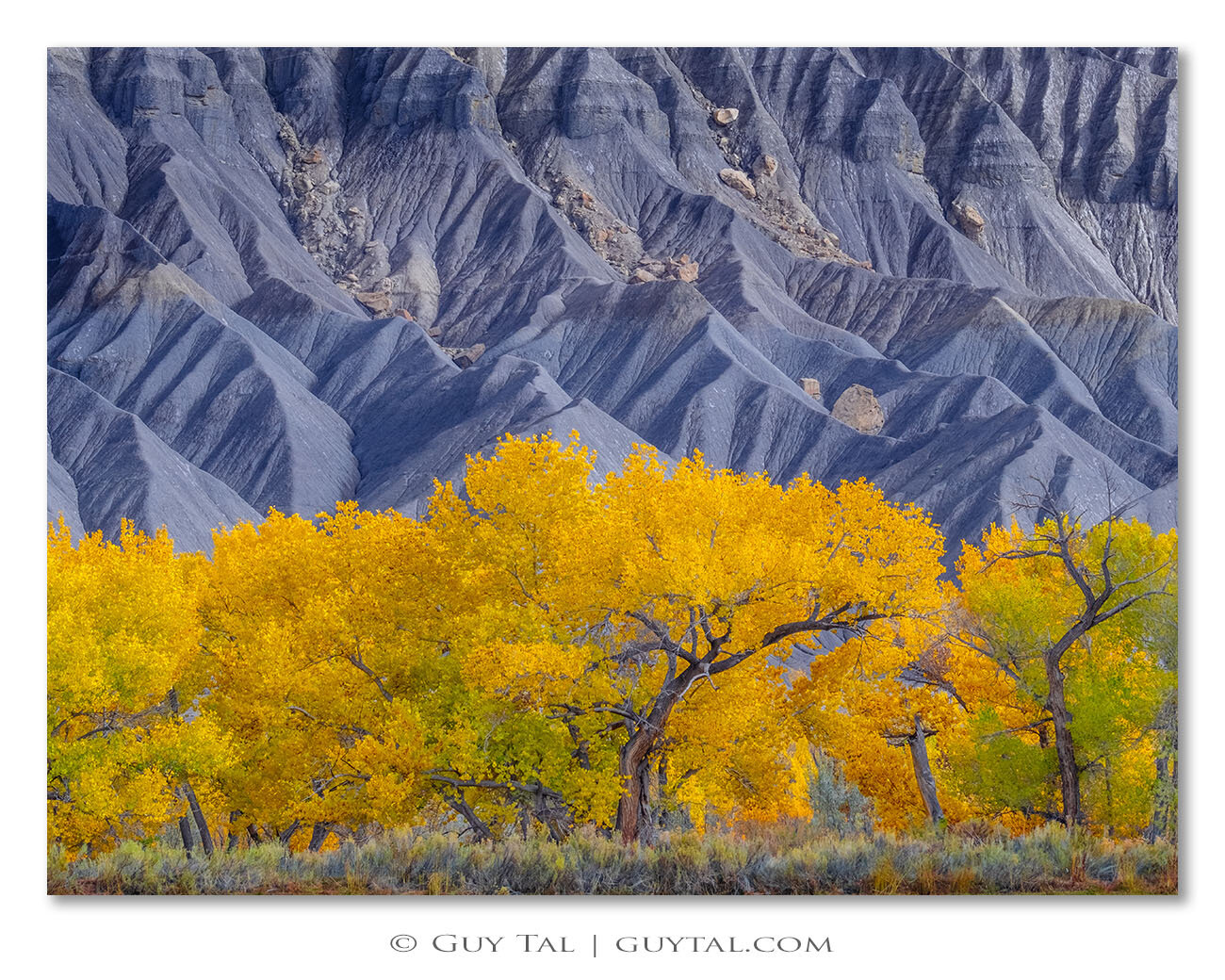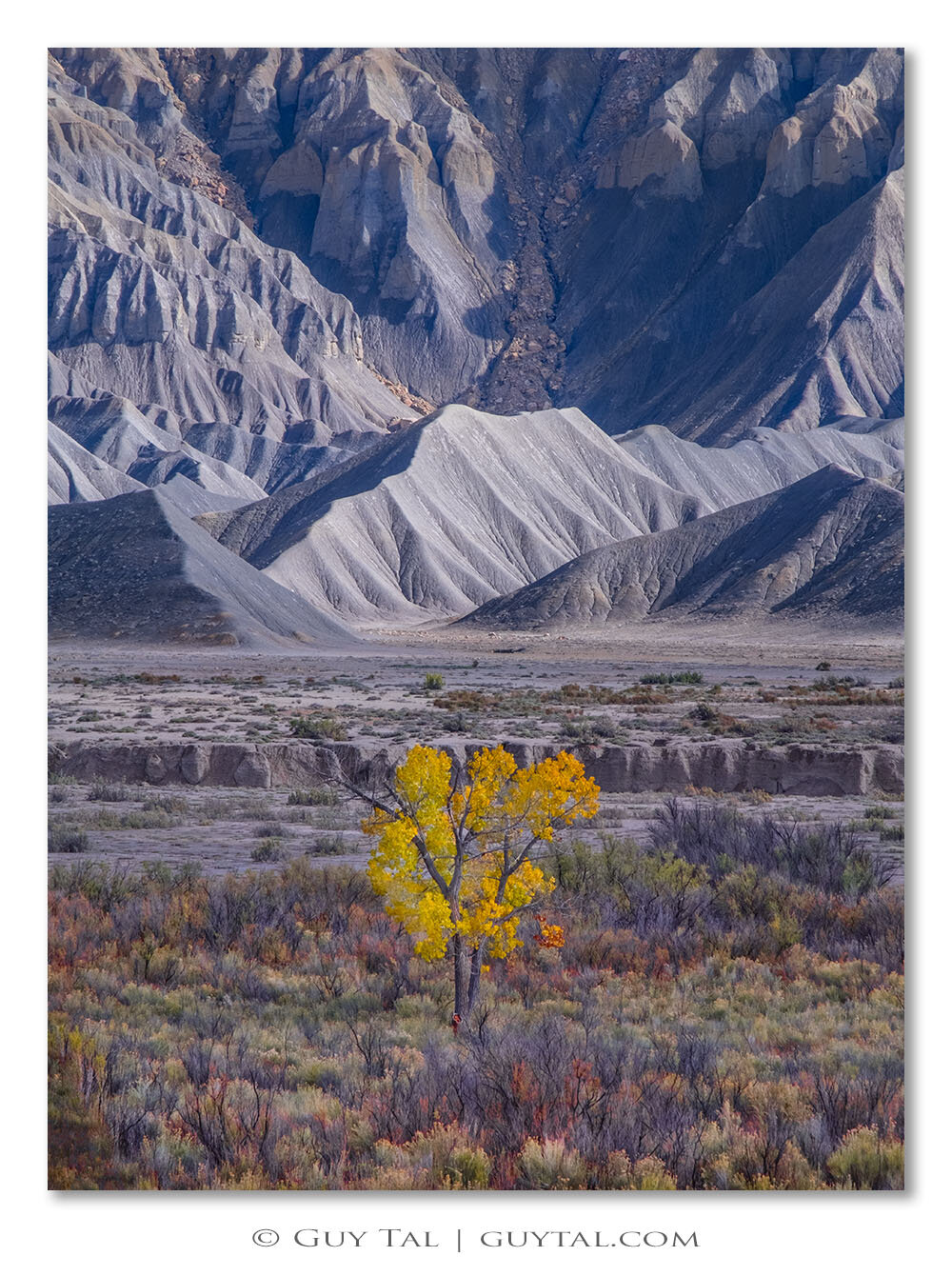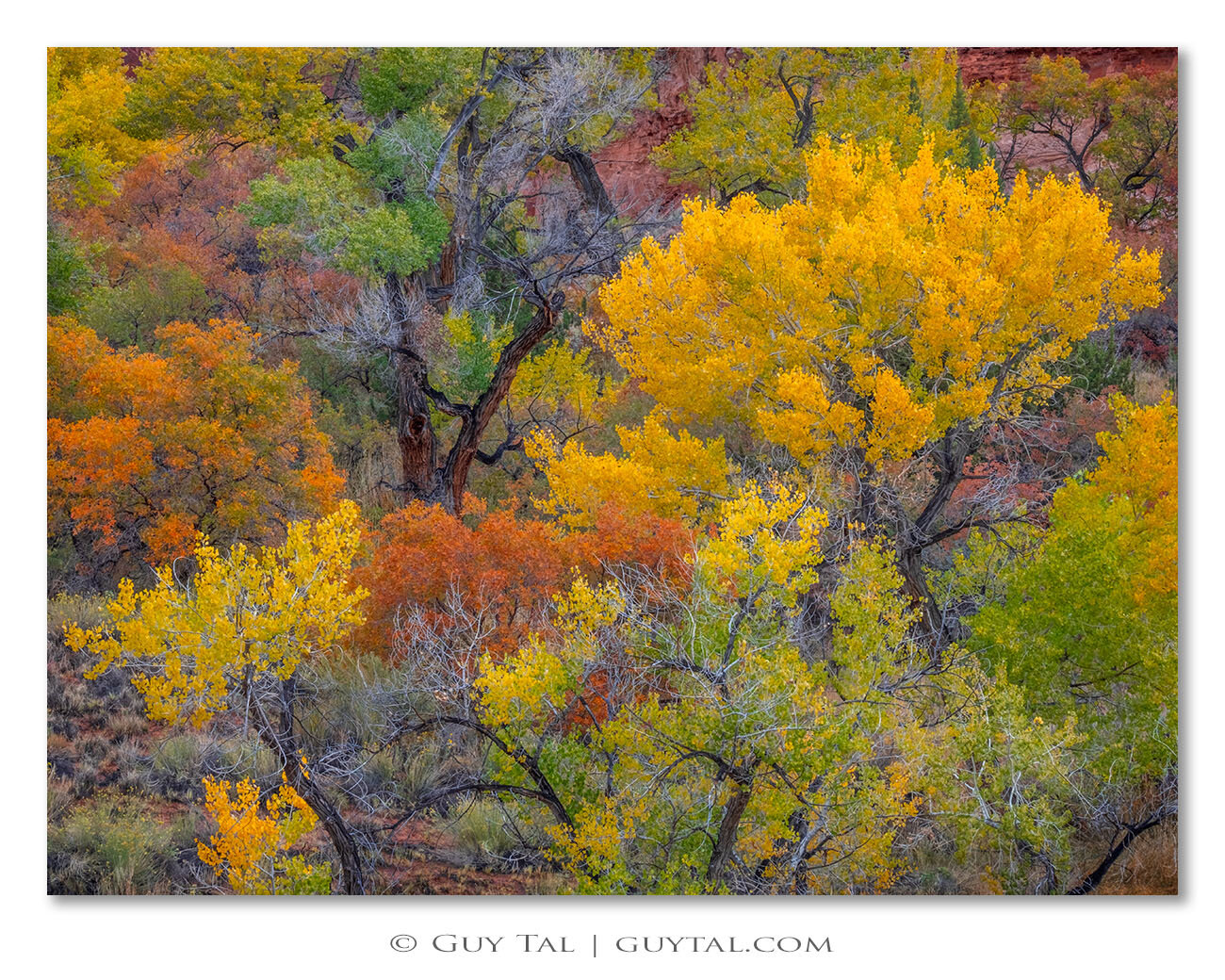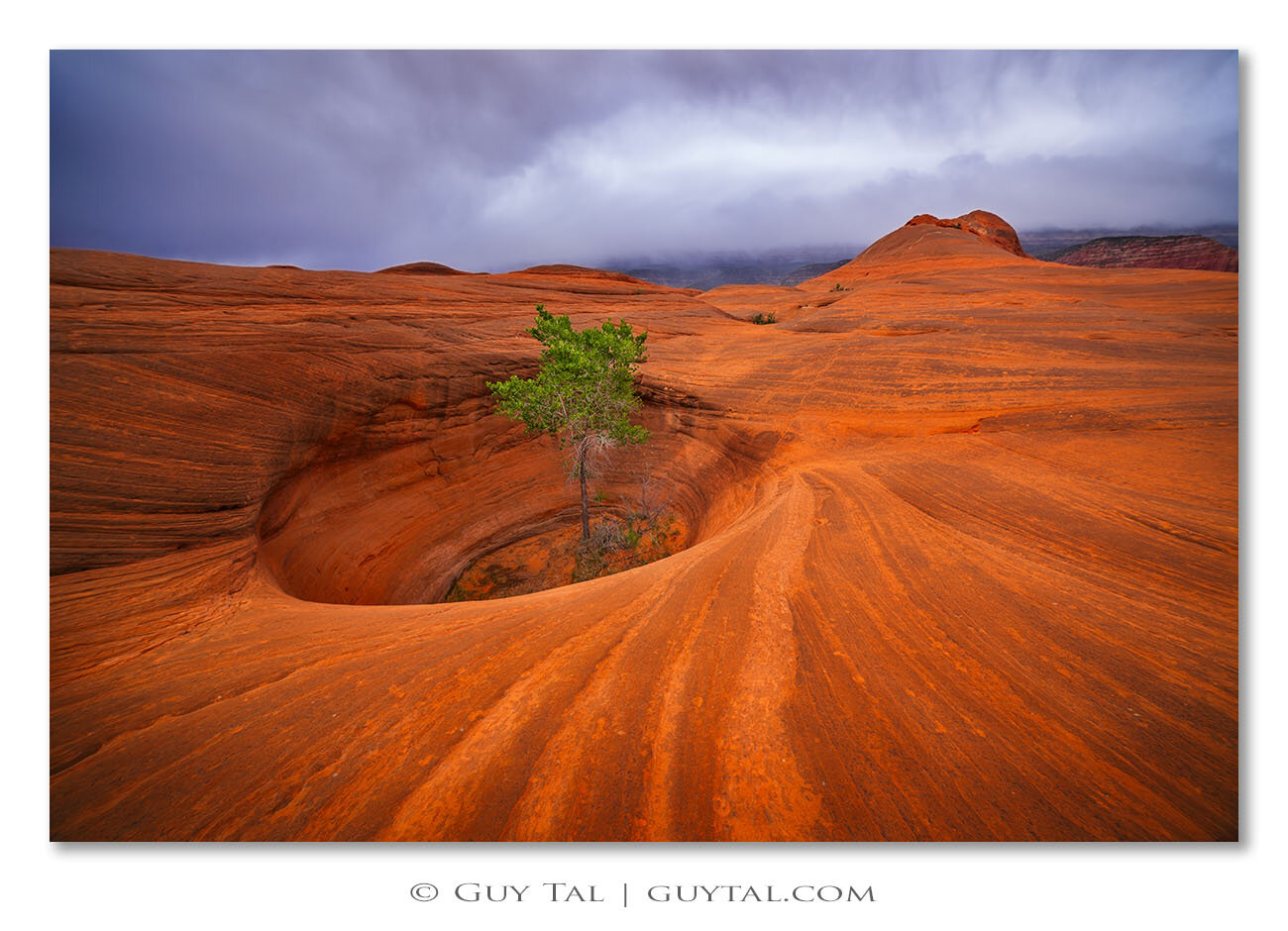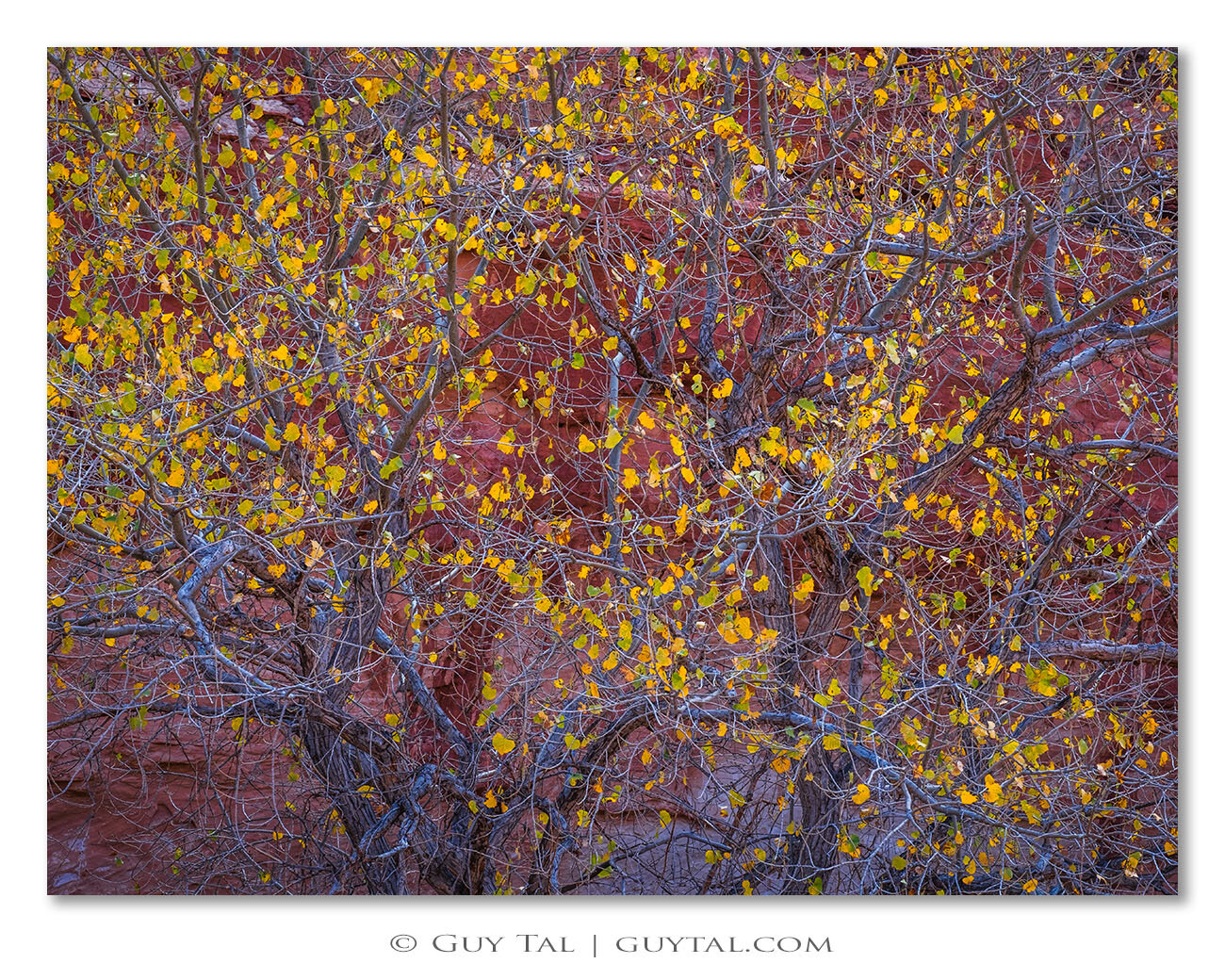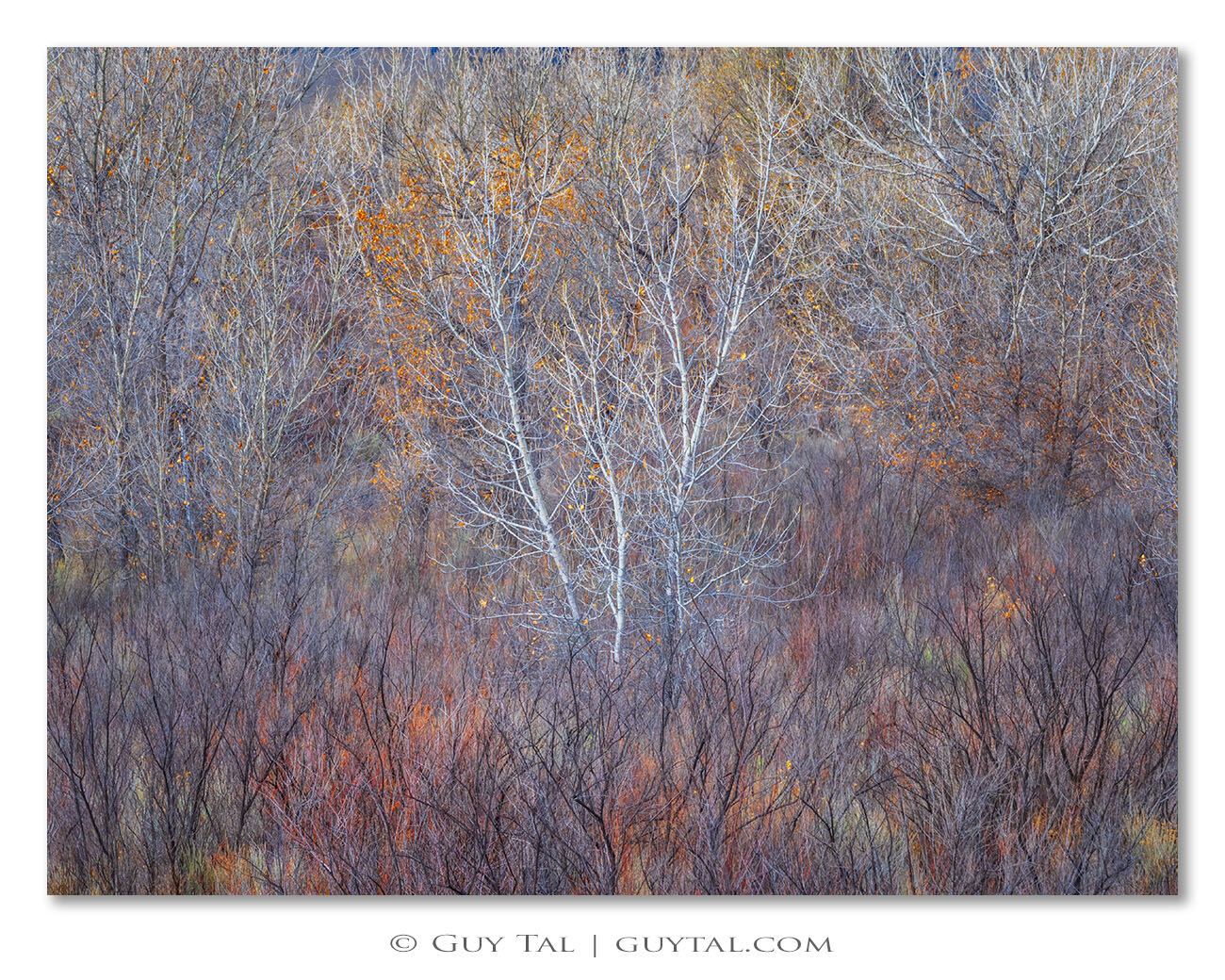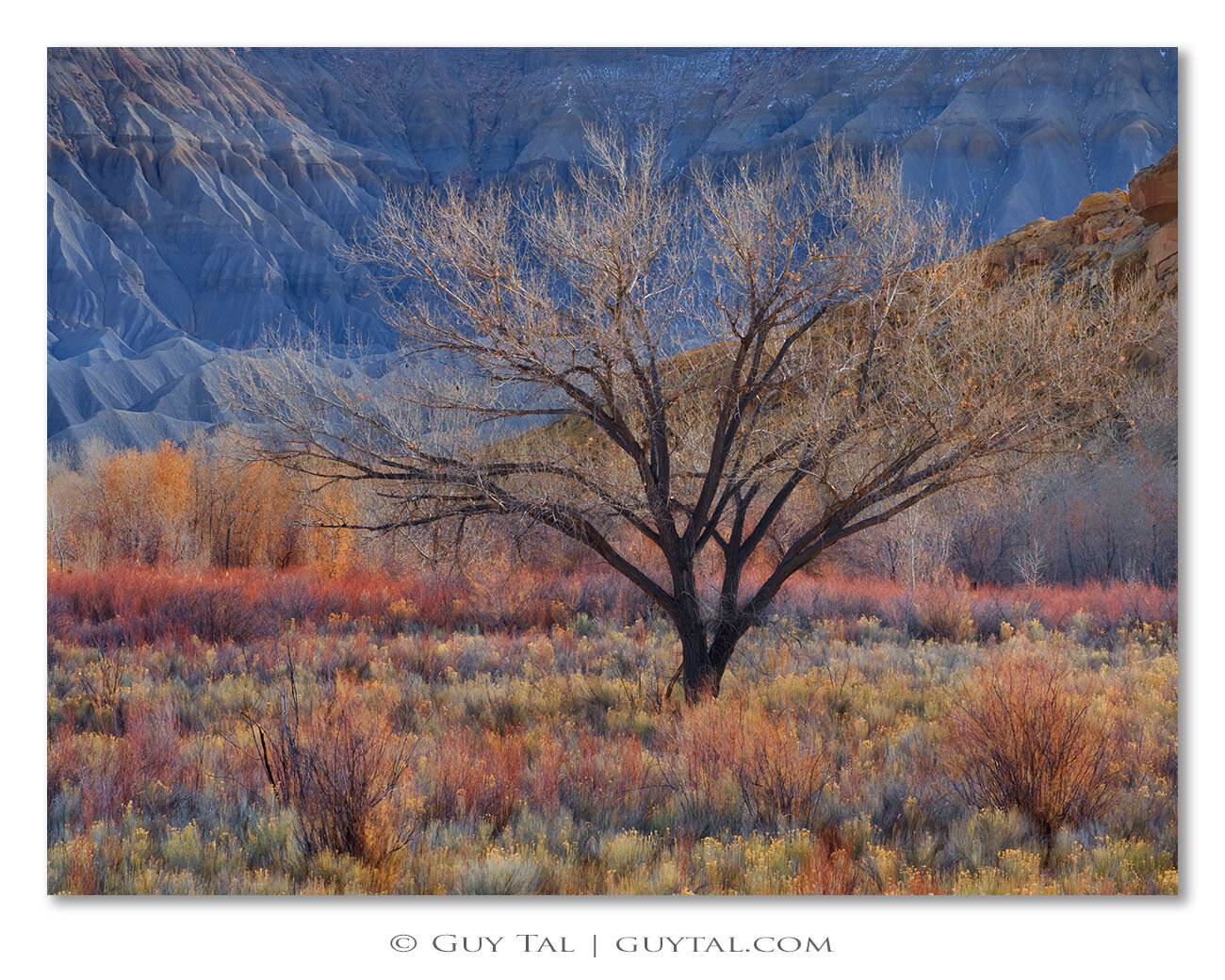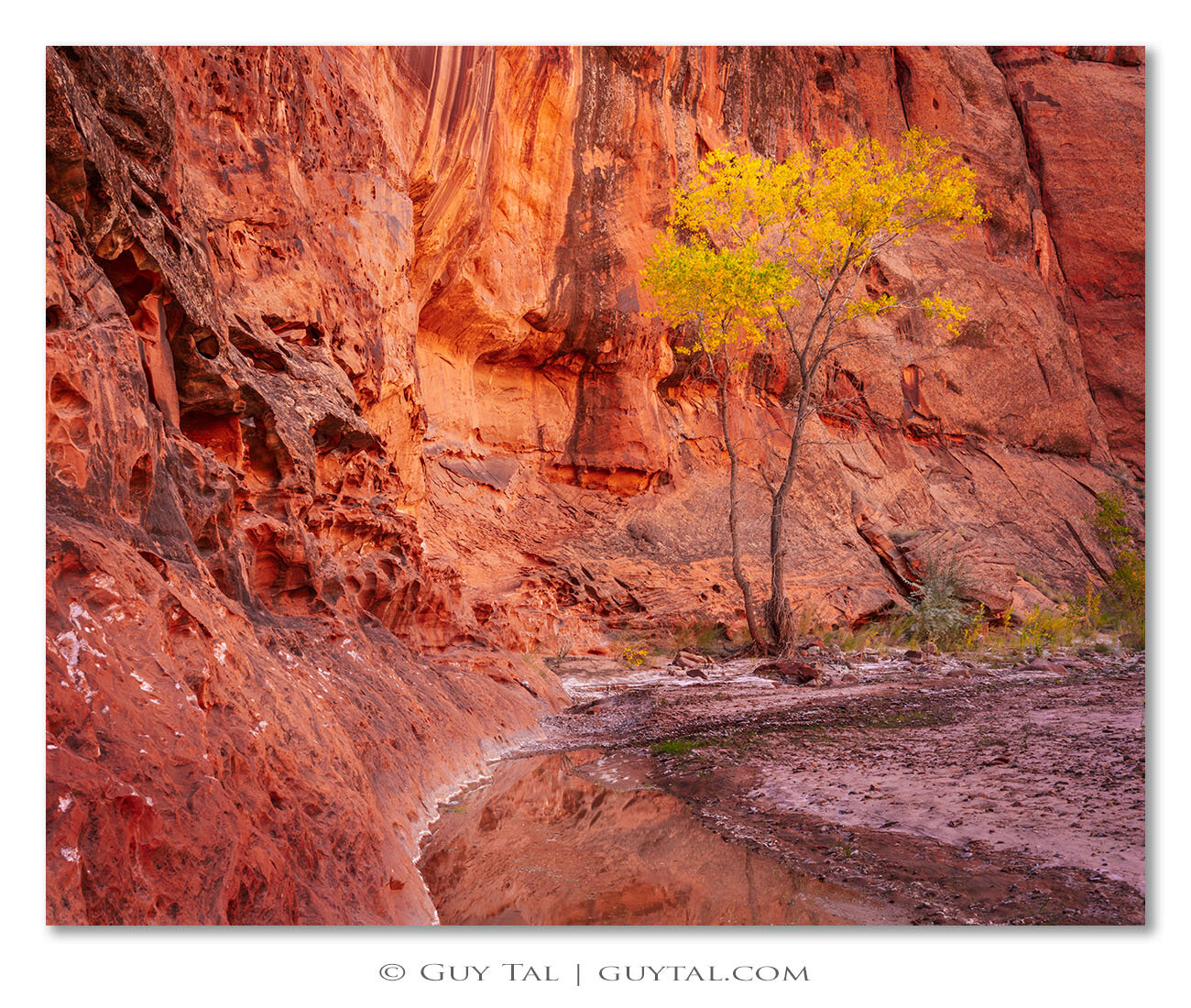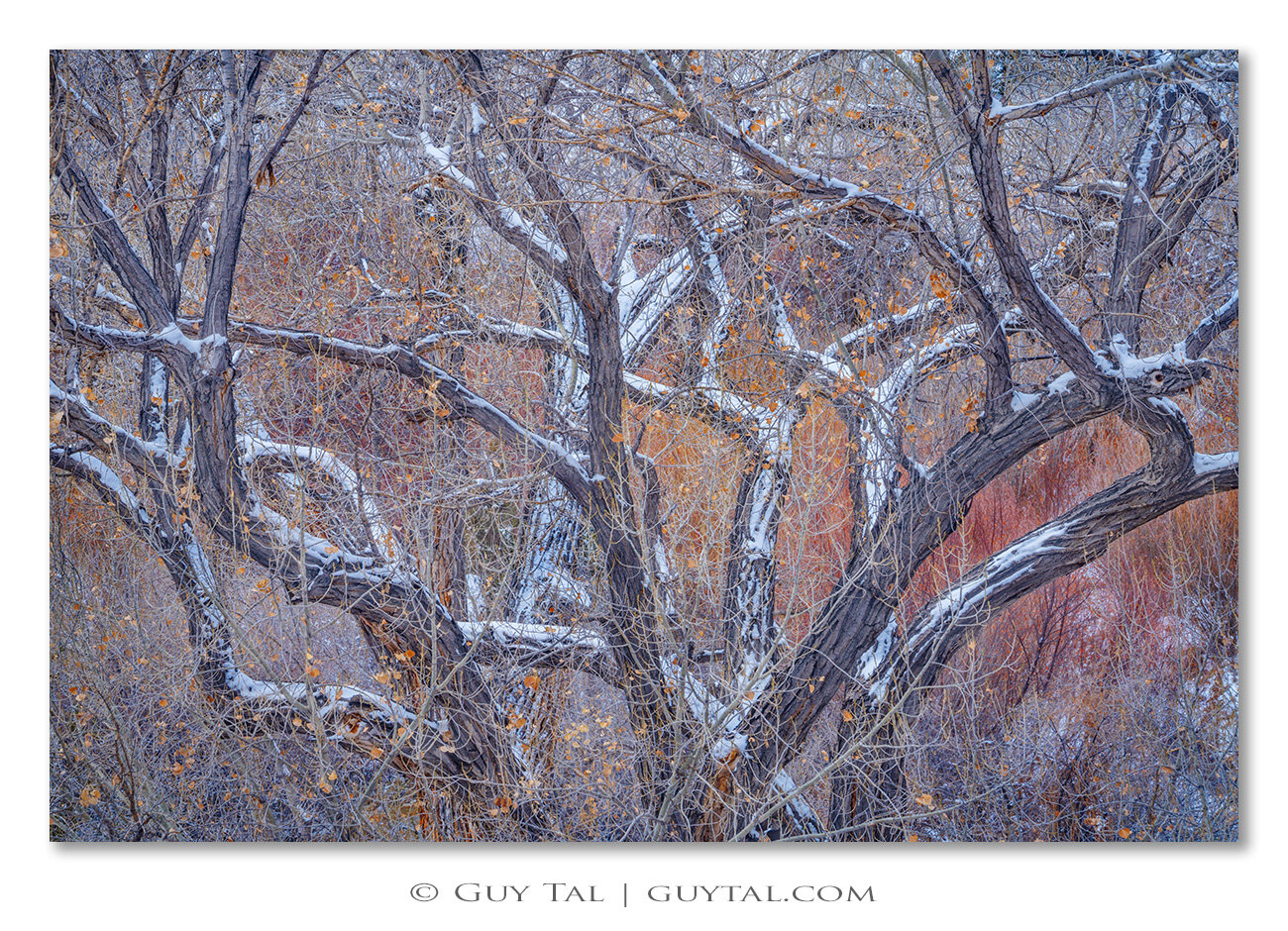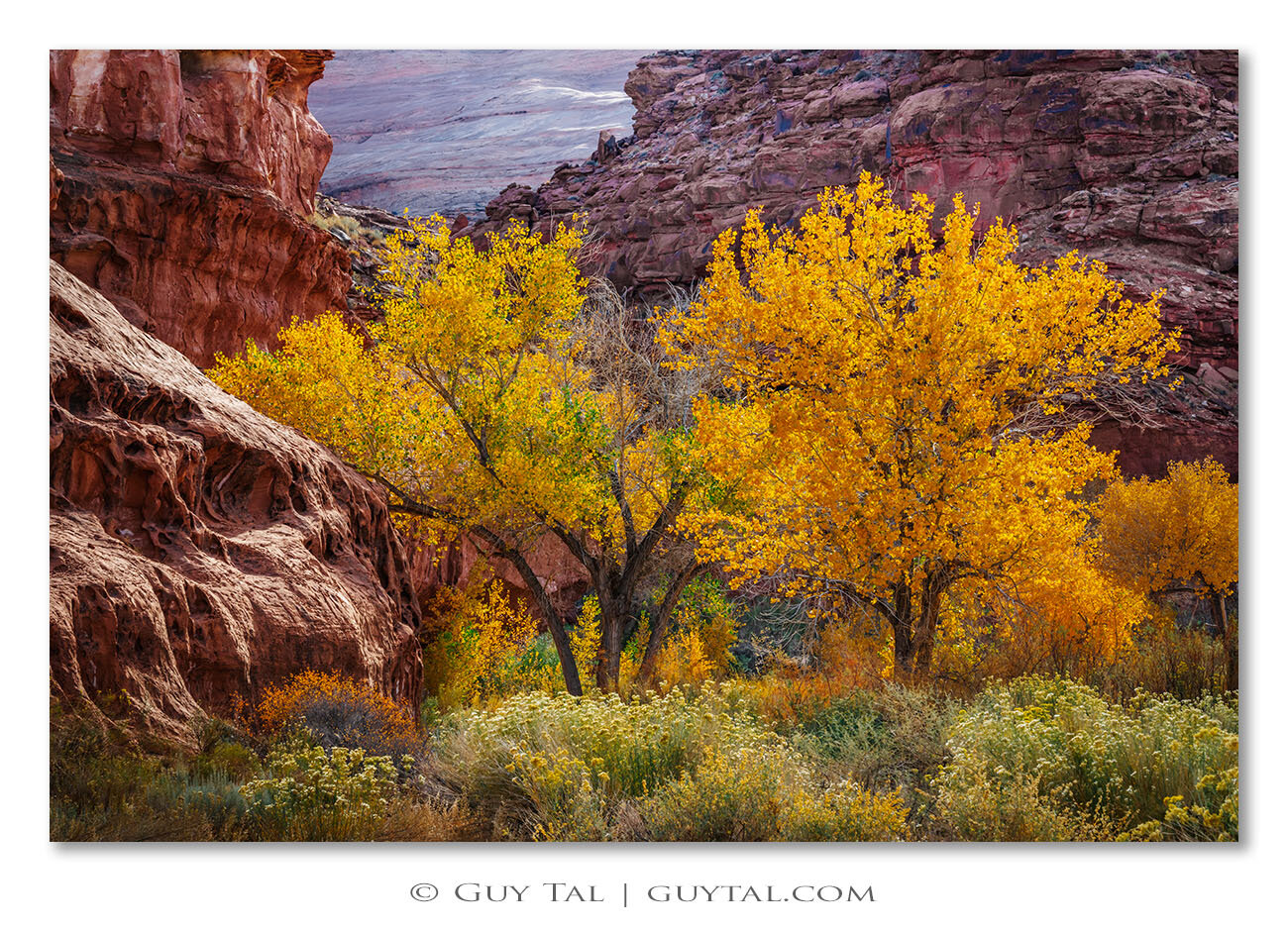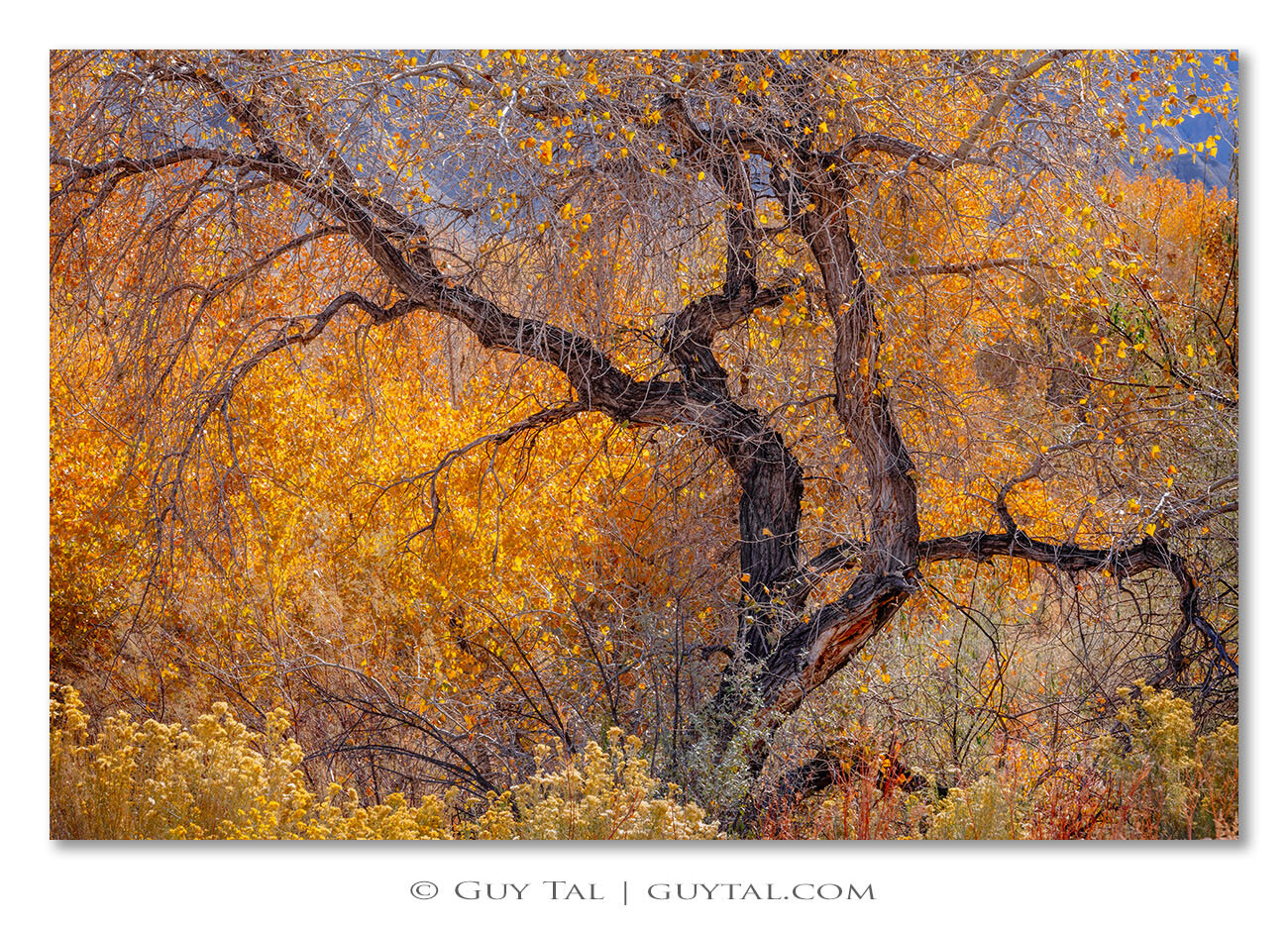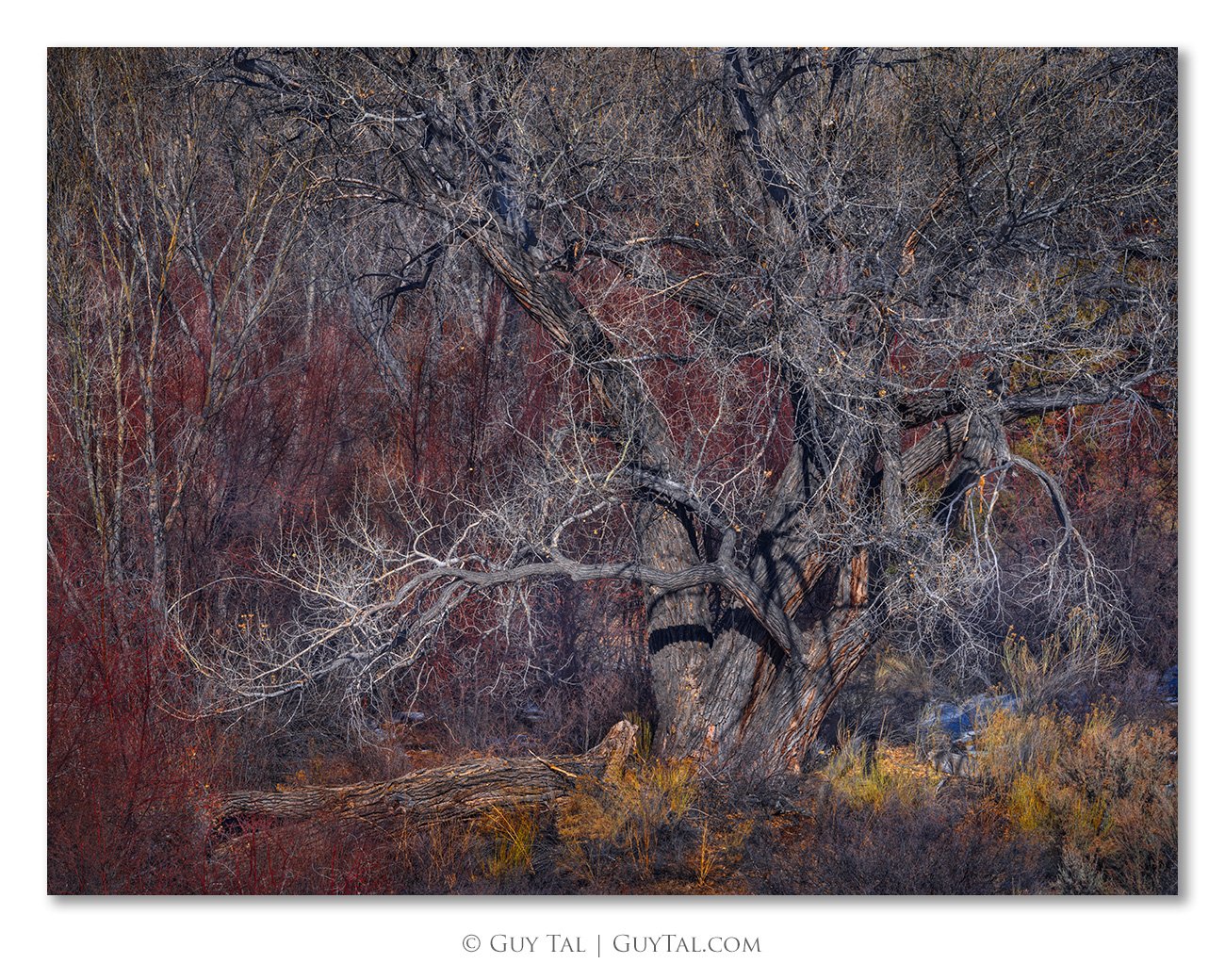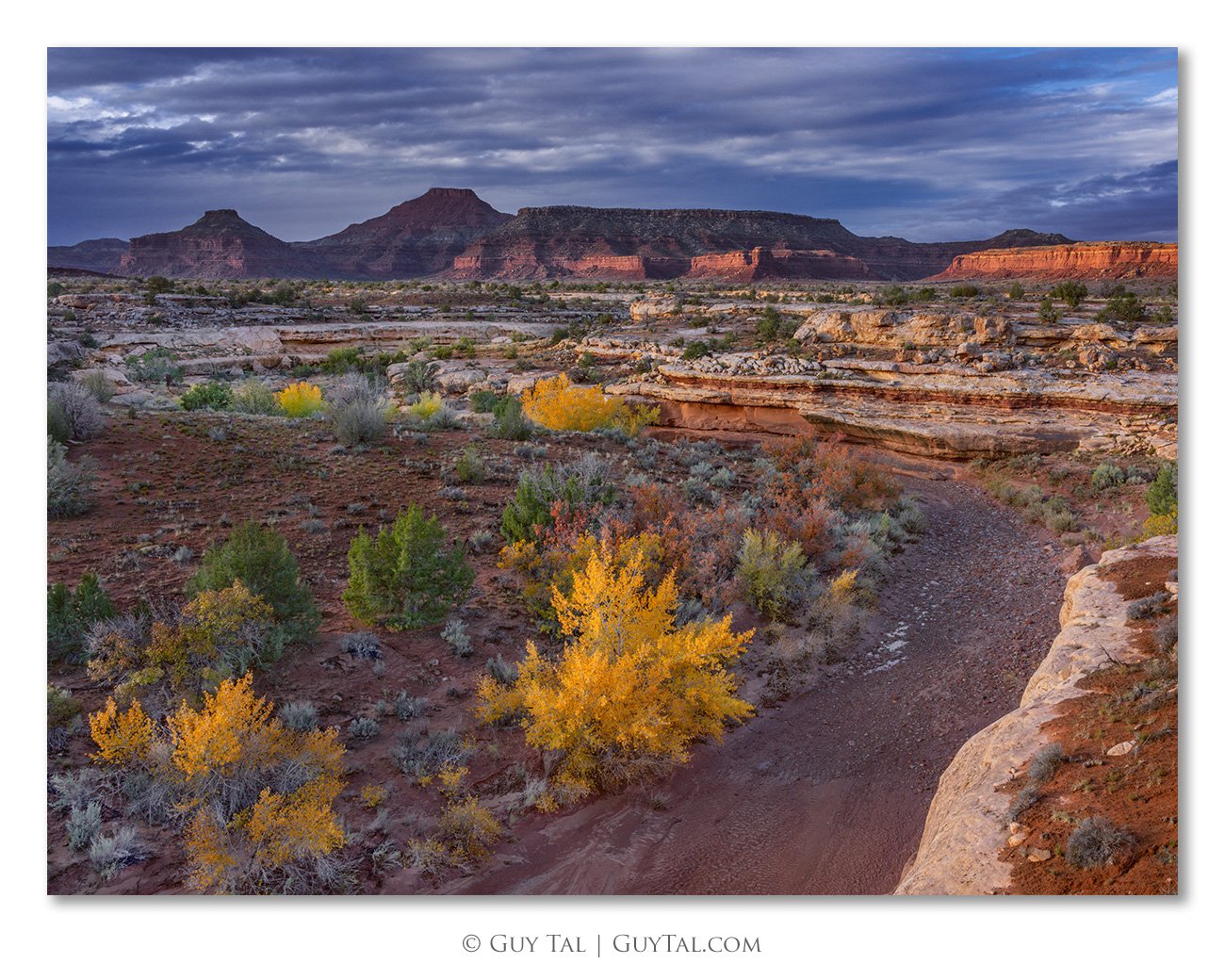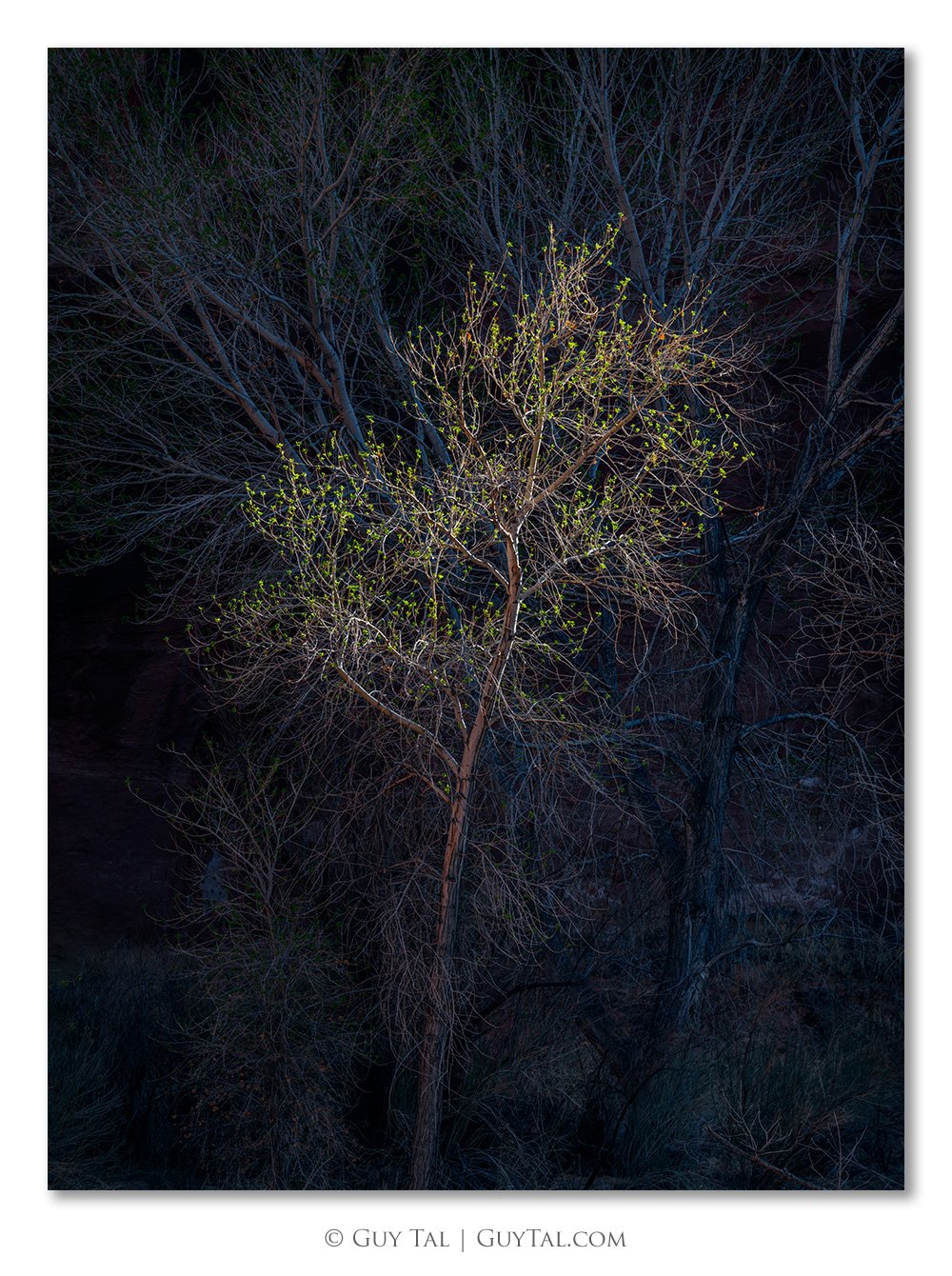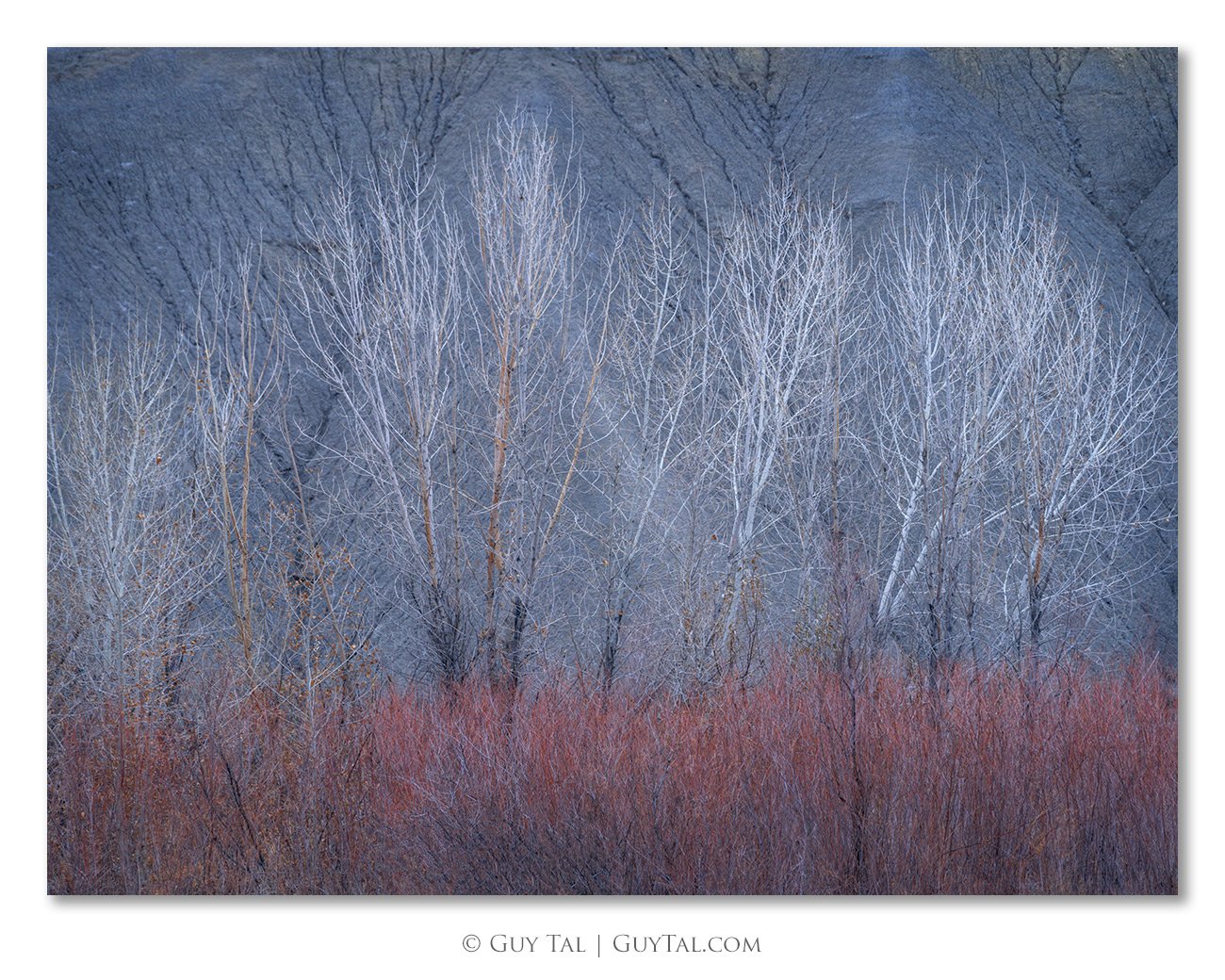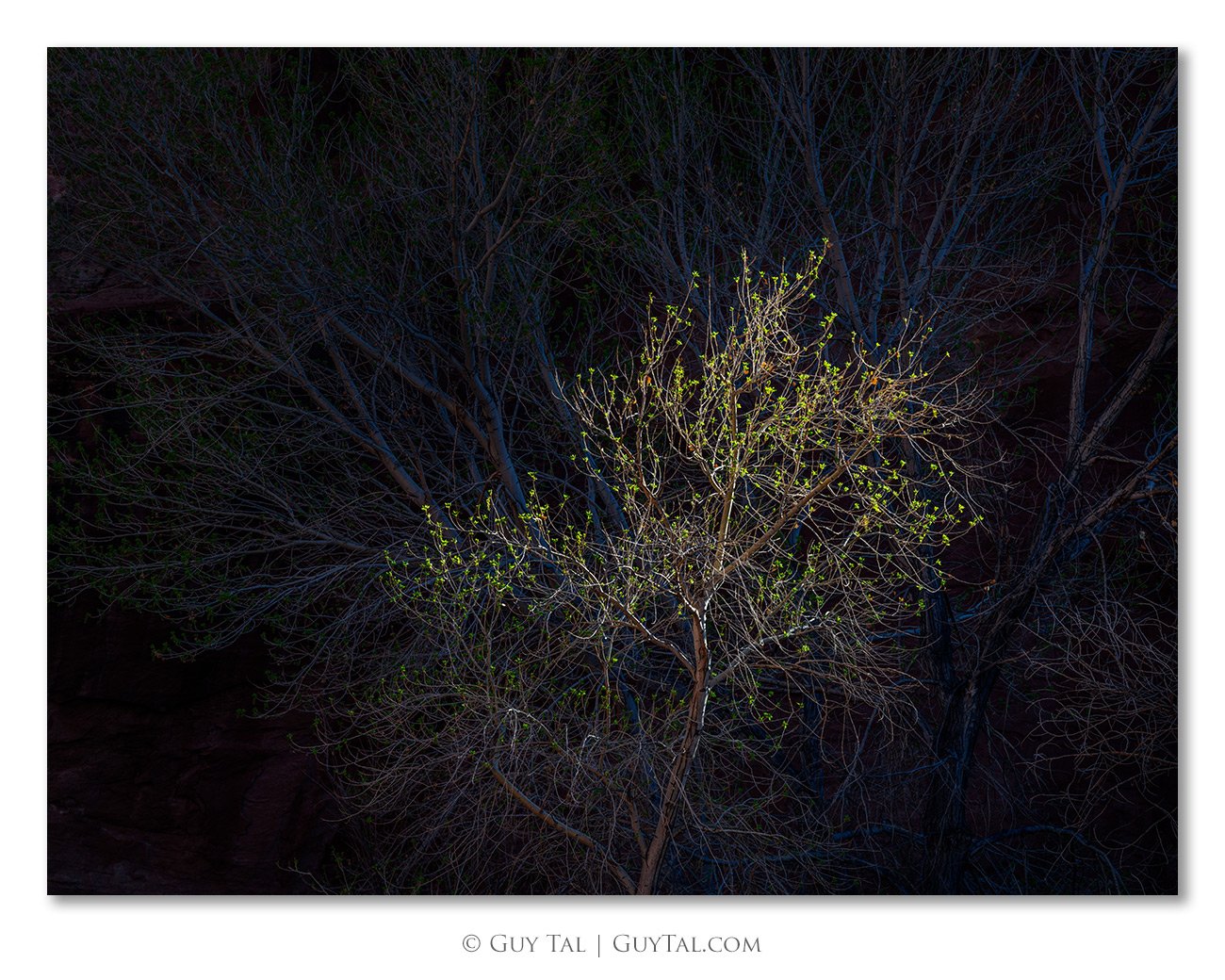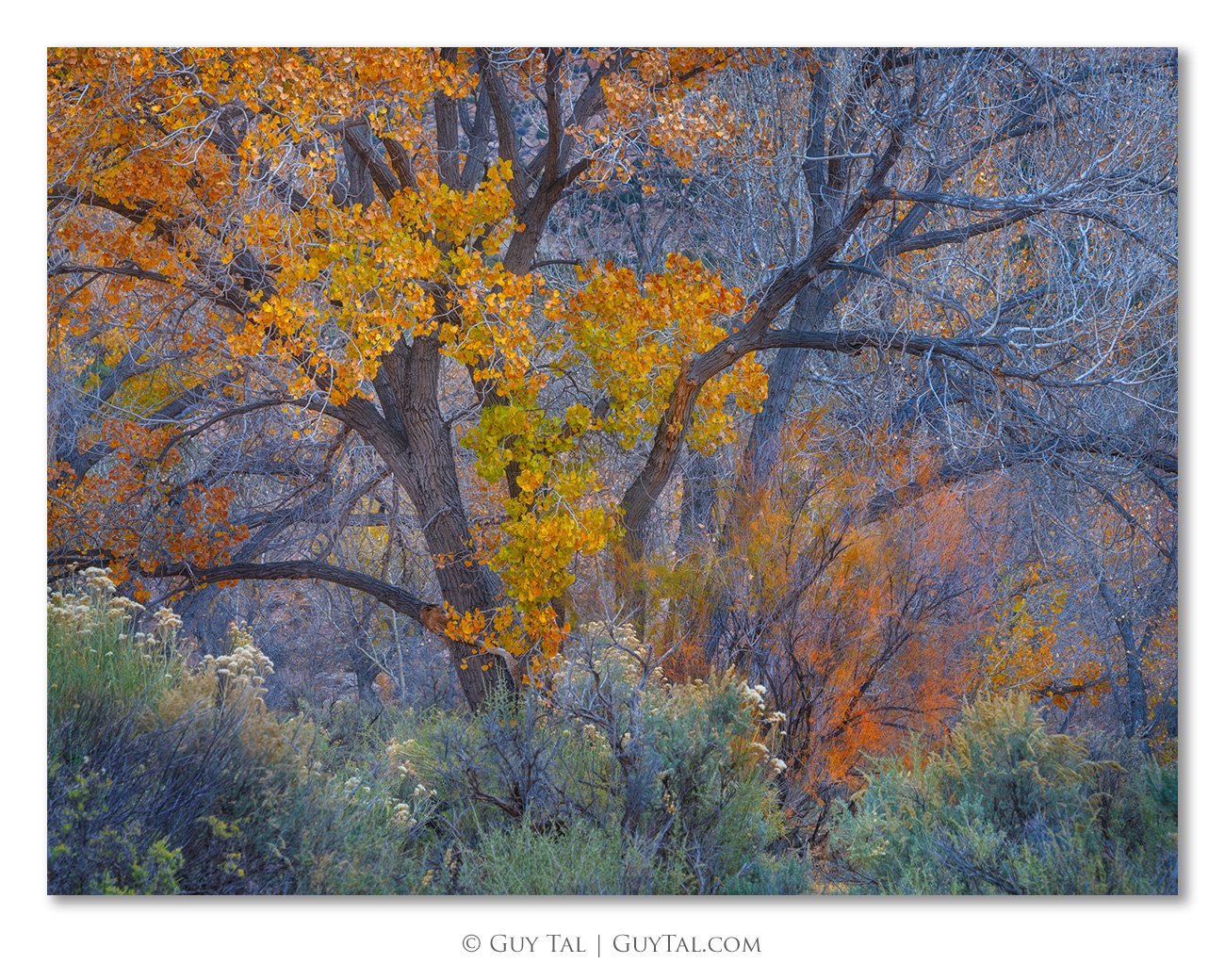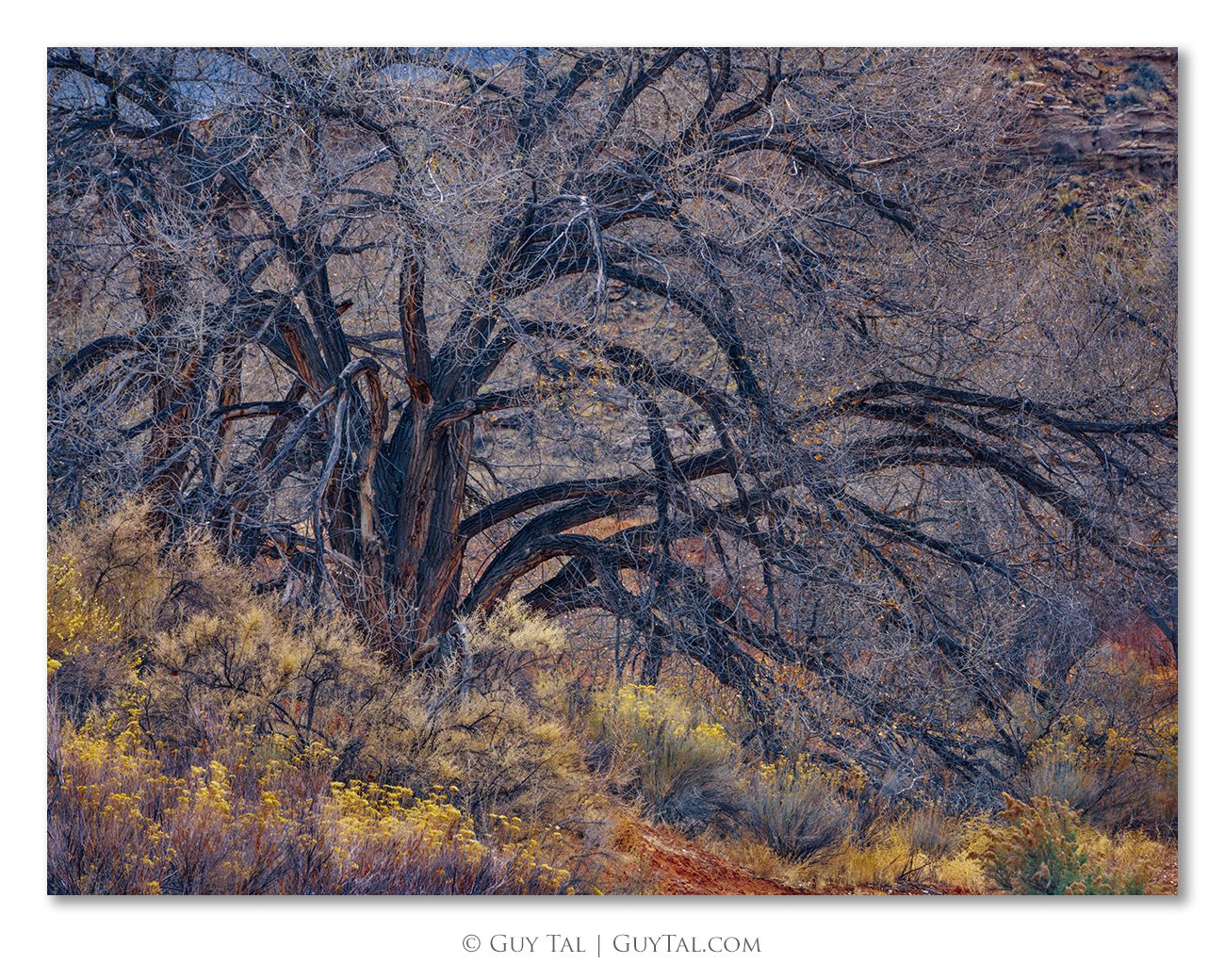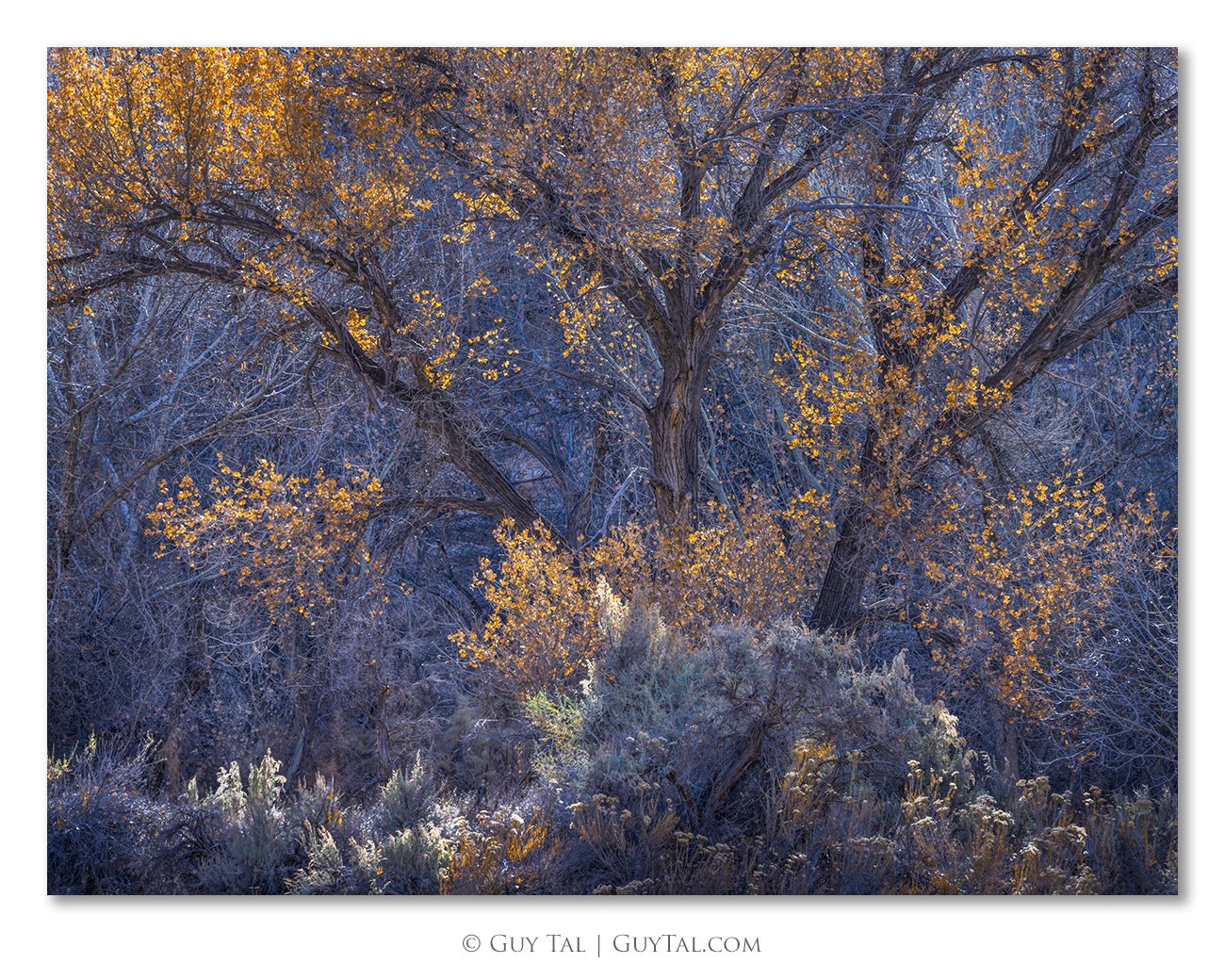Arboreal Stories: Cottonwoods
Cottonwoods
Note: Clicking on any thumbnail below will bring up a larger version of that image, displayed in a lightbox. Once in the lightbox, you may bring up additional image information by hovering your cursor over the image. To return to this gallery page, click the “X” icon on the top right corner of the lightbox.
This portfolio is one of a series dedicated to trees that have become personally meaningful to me, by which I mean that they are prominent and welcome parts of my world and life. It is not an exaggeration to say that, being the recluse that I am, I spend considerably more time in the company of these trees than in the company of people (including those I consider as friends).
Cottonwood trees are among the most ubiquitous and iconic trees native to the desert of my home, the Colorado Plateau. Their presence anywhere in the landscape indicates the proximity of water, and their thick and twisted trunks often speak of the struggle to survive in the face of adversity.
Indeed, these trees persist through periods of years-long drought, massive floods, extremes of heat and cold—all of which shape and temper them so that no two are alike.
Twice each year, these solemn giants go through profound transformations: donning the lime-green buds of spring foliage after a naked winter slumber; and changing into a dazzling golden coat in autumn, before the leaves fall again.
An artist prone to the indiscretion of anthropomorphism, may see in these trees the visages of ancient mystics, tormented and scarred by time, yet oblivious to it. Cottonwoods are recurring characters in my desert stories, and their presence is almost constant in the places I love more than any other.






